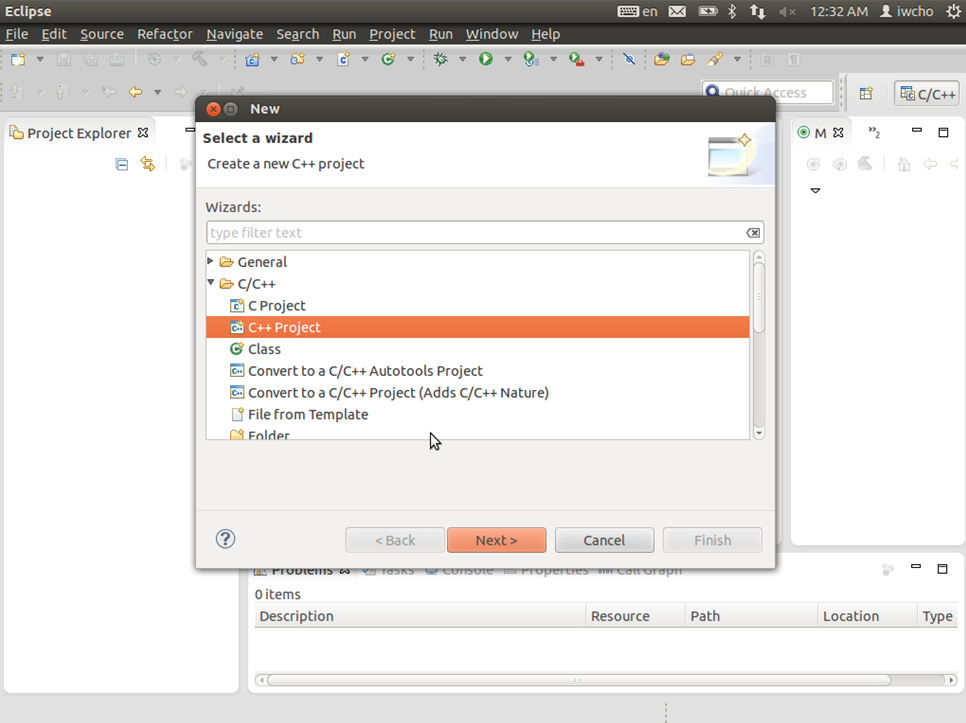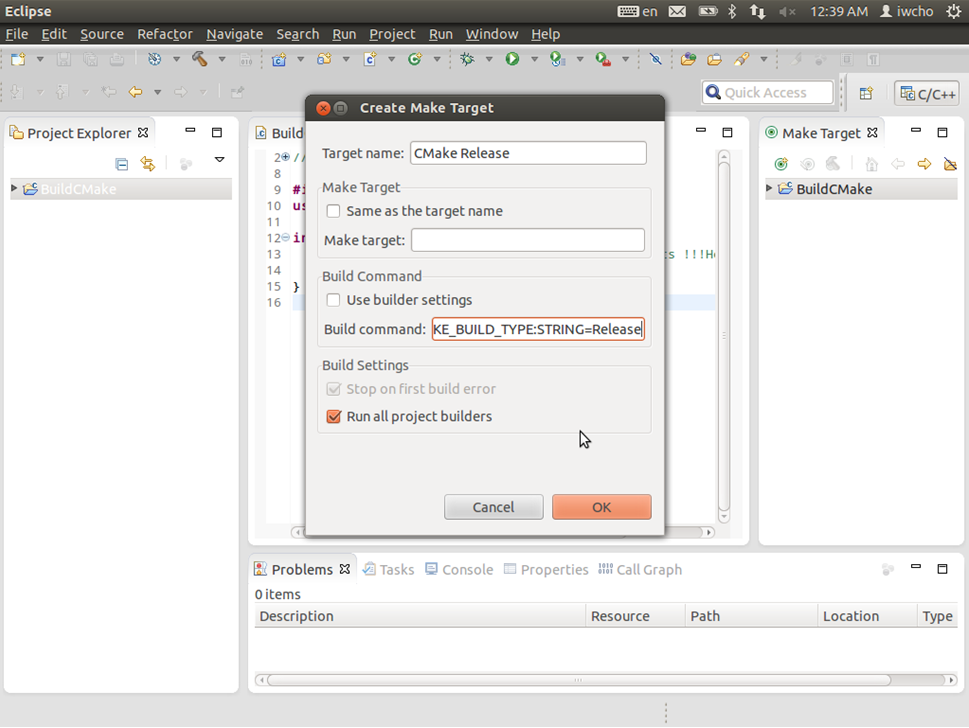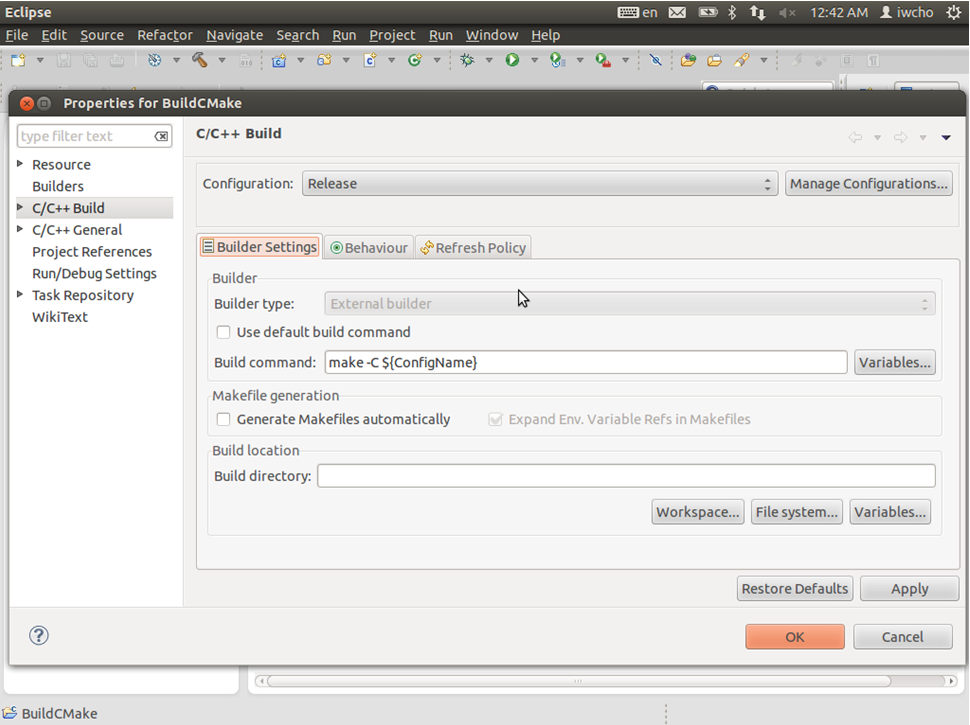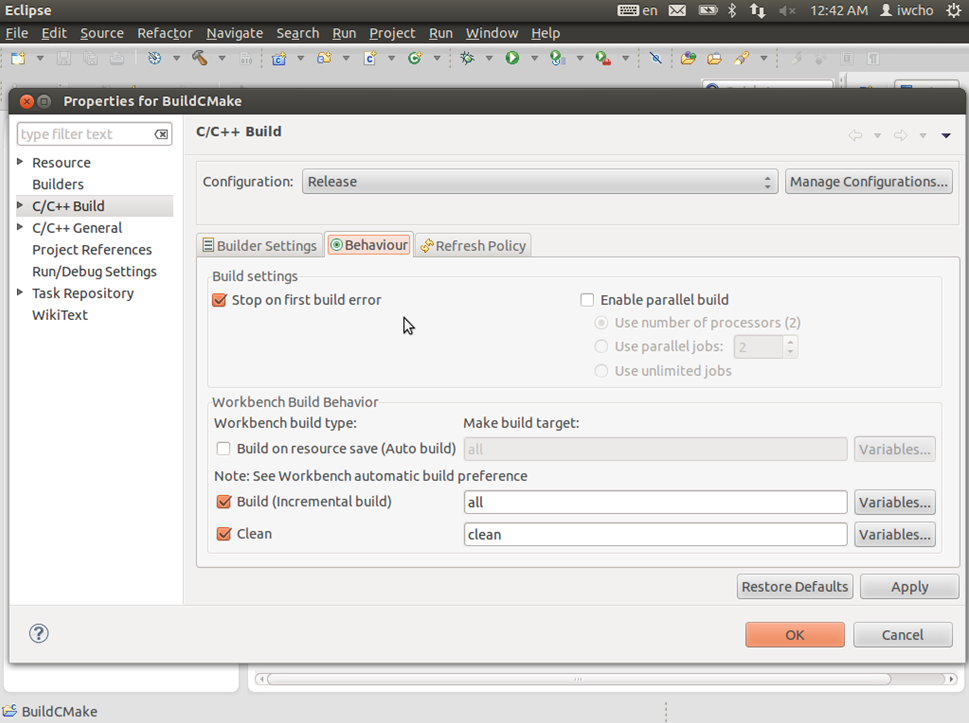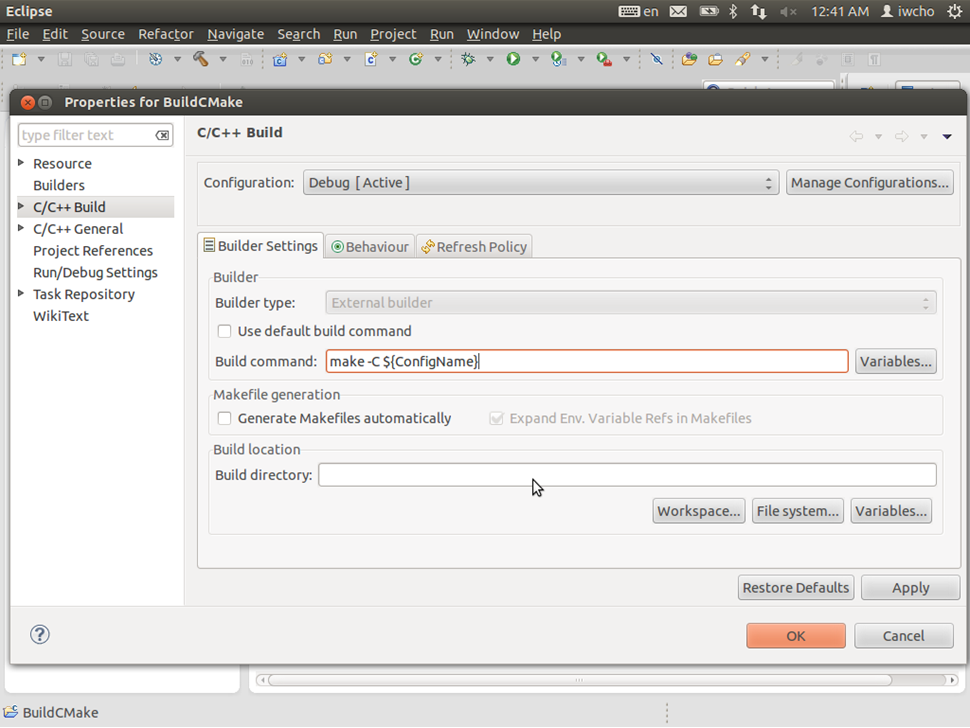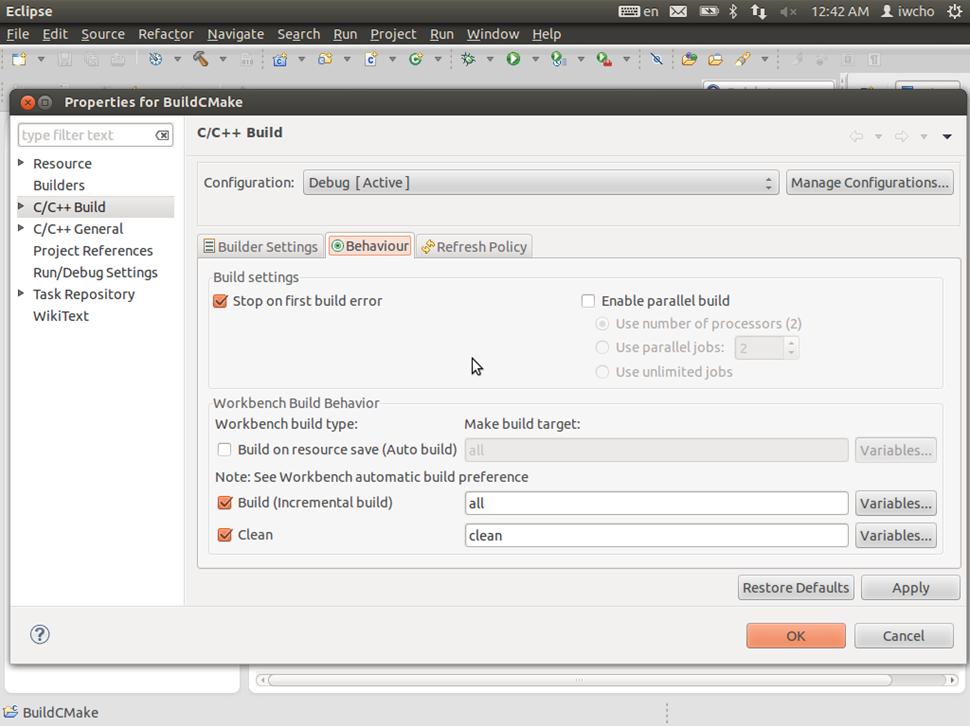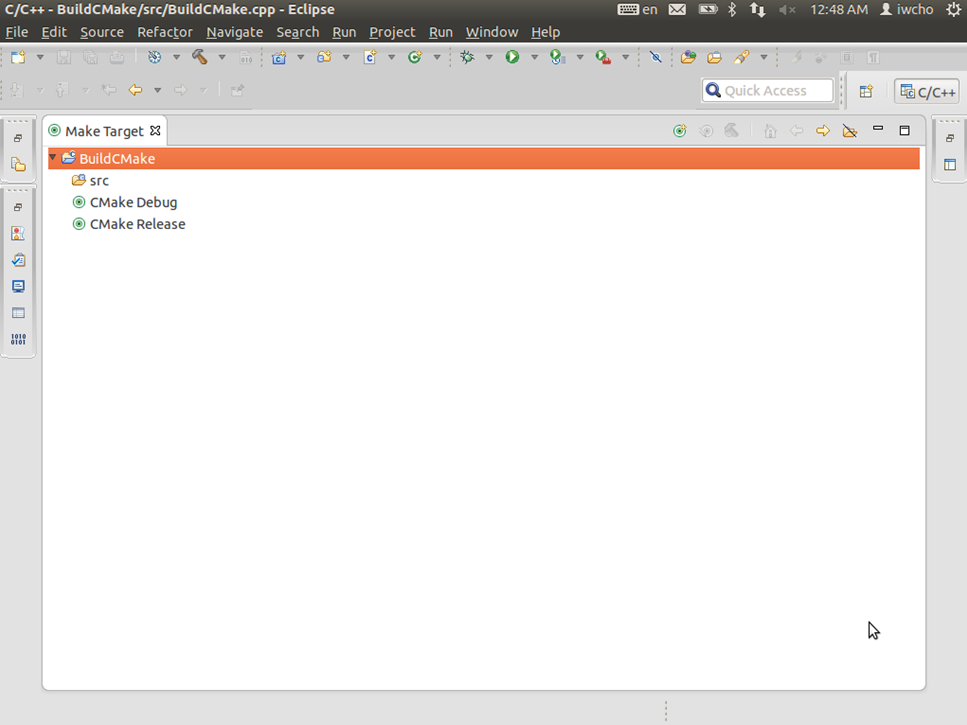Difference between revisions of "Compiling/Eclipse/Manually"
Jasonspriggs (talk | contribs) (GCI Task 8038207) |
Jasonspriggs (talk | contribs) |
||
| Line 1: | Line 1: | ||
| + | [[Compiling/Eclipse|Setting up in Eclipse]] | ||
| + | |||
BRL-CAD build system uses CMake and so I will show you how to build a project from cross-platform CMake on Eclipse. The CMake 2.8 project generator for Eclipse does not work, so you must create the project and configure it to build with GNU Make. Here’s how to do it on Linux. | BRL-CAD build system uses CMake and so I will show you how to build a project from cross-platform CMake on Eclipse. The CMake 2.8 project generator for Eclipse does not work, so you must create the project and configure it to build with GNU Make. Here’s how to do it on Linux. | ||
Latest revision as of 09:26, 16 December 2012
BRL-CAD build system uses CMake and so I will show you how to build a project from cross-platform CMake on Eclipse. The CMake 2.8 project generator for Eclipse does not work, so you must create the project and configure it to build with GNU Make. Here’s how to do it on Linux.
Contents
Create an Eclipse Project[edit]
Create an Eclipse CDT (C/C++ Development Tooling) project using the File > New > C++ Project command for your C++ project, or File > New > C Project for a C project. Do not create the project using the CMake Eclipse project generator.
Create Eclipse Make Targets[edit]
The conventional approach to using CMake with Eclipse is to create an external tool in Eclipse. However, a Make Target is simpler, and because it is stored in the Eclipse .project file, you can check it into your version control system and it will work in every one of your working copies, on every computer. Create a Make Target for each configuration that you want to build. Here I assume that you have the usual Release and Debug configurations:
- Display the Make Target window using the Window > Show View > Make Target menu command. It should appear on the right, with the Outline window.
- Select the folder for the project for which you want to add CMake. CMake will run with this folder as its working directory.
- Right click on the folder and select New from the context menu. The Create Make Target dialog will appear.
- Type Target name CMake Release
- In Make target, deselect Same as the target name, and make sure that the Make target field is empty
- In Build Command, deselect Use builder settings and set the Build command to
cmake -E chdir Release/ cmake -G "Unix Makefiles" ../ -DCMAKE_BUILD_TYPE:STRING=Release
- Click OK
- Repeat, this time for Target name CMake Debug, and Build command:
cmake -E chdir Debug/ cmake -G "Unix Makefiles" ../ -DCMAKE_BUILD_TYPE:STRING=Debug
- Create the Release/ and Debug/ directories
mkdir Release Debug
Set Up the Eclipse CDT Builder[edit]
Next, set up the CDT builder to run the Makefiles that CMake builds.
- Right click on a CDT project. In the context menu, select Properties.
- On the left, select C/C++ Build
- Set Configuration to Release
- Choose the Builder Settings tab
- Choose the Behavior tab
- Set Configuration to Debug
- Set Configuration to Release
Build the Project[edit]
Use CMake to generate an out-of-source GNU Make build system:
- In the Make Targets window, double click on CMake Release or CMake Debug to generate the GNU Make build system in Release/ or Debug/, respectively
- If necessary, edit your CMakeLists.txt control files
- Delete the contents of the corresponding build directory. For example:
rm -r Release/*- and repeat.
Actually, for minor edits to your CMakeLists.txt control files, you need not delete the build directory. However, I cannot tell you exactly what the threshold for “minor edits” is.
Now, build the project the usual way with Eclipse:
- Select the configuration to build (Release of Debug) with the Project > Build Configurations > Set Active command
- Build with the Project > Build Project command
- Edit your source code files, and repeat
